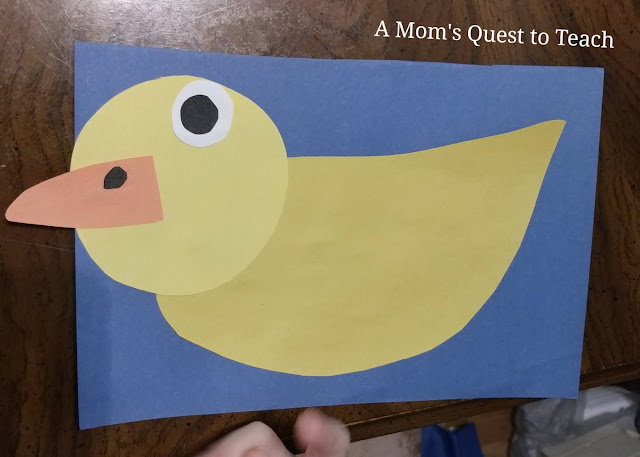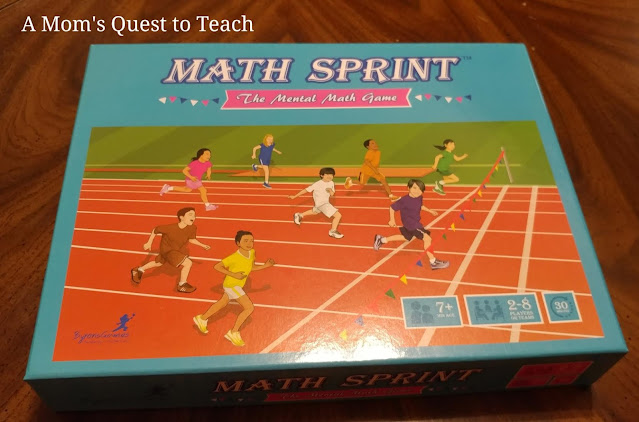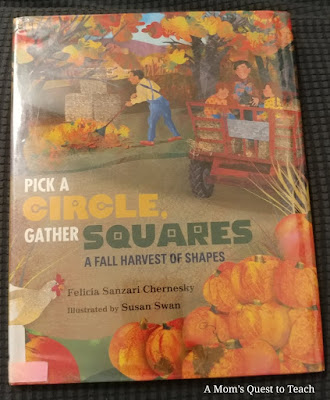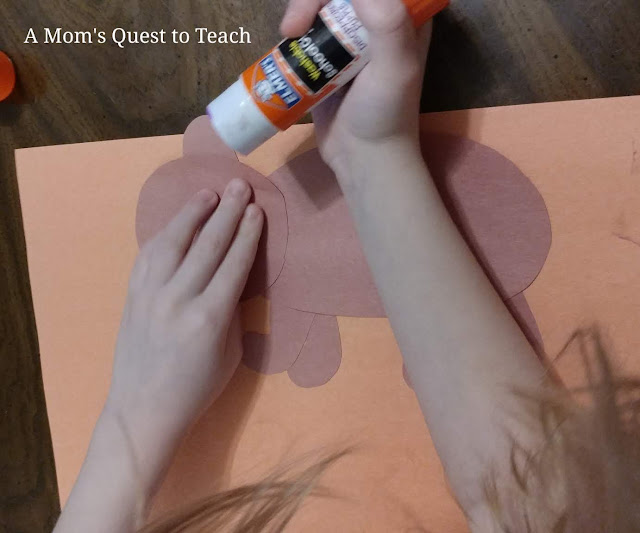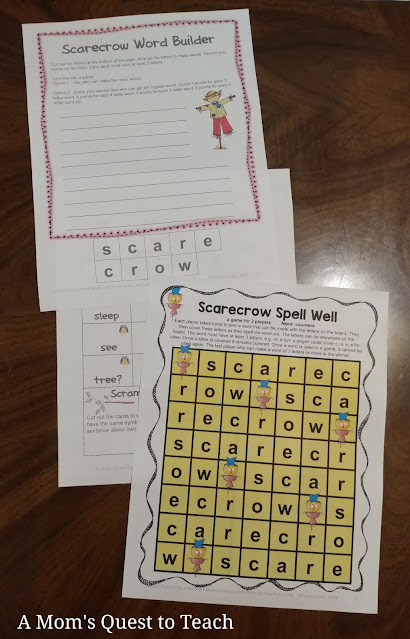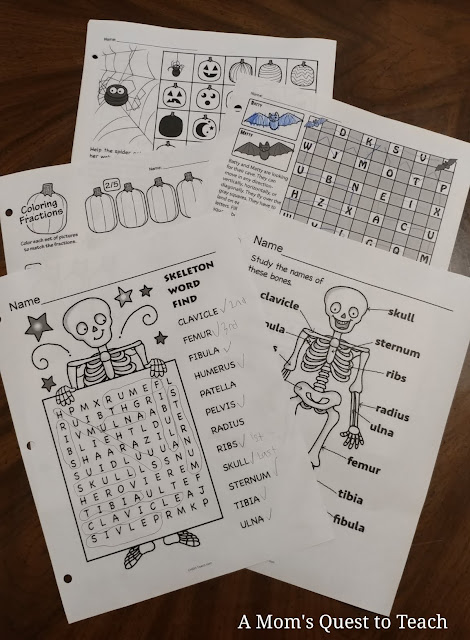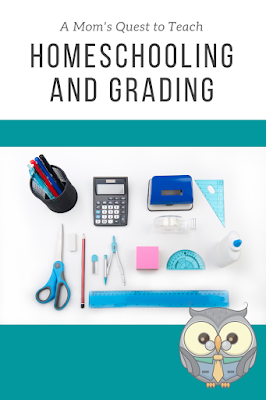Disclaimer: I received a FREE copy of this product
through the HOMESCHOOL REVIEW CREW in exchange for my honest review. I was not
required to write a positive review, nor was I compensated in any other way.
We love playing games in our house, and those games that also help our children with their homeschooling and education have a special place on our shelves. If you are looking for a fun and educational way for your children to review their math skills, then you should definitely check out the latest game from Byron's Games. Math Sprint – The Mental Math Game has been a welcome addition to our game-schooling time as everyone in our family joins in to answer questions on one of the over 250 cards.
Reviewing Math Sprint from Byron's Games has been so much fun with our children. Several nights, after dinner, we brought out the game to test our addition and subtraction skills. There are multiplication and division questions and word problems, but we used only those cards with addition and subtraction as we have a kindergartner, second-grader, and senior. If our children were older, we would have used all the cards provided.
Recommend for ages 7+ --- 2 to 8 players --- 30 minutes of gameplay
And Just What Do You Get in Your Bright Blue Box?
- Instructions
- One running track board (for gameplay)
- 258 Cards: These are divided into the following categories
- 92 addition and subtraction cards
- 106 multiplication and division cards
- 30 wild cards
- 30 challenge cards
- 10 dry erase cards (so you can make up your own questions)
- One dry erase marker
- 8 Runner playing pieces in 8 different colors (there are character names and pictures on the instruction sheet)
How Do You Play Math Sprint?
Math Spring allows you to be very flexible in game play based upon the ages and levels of the children playing the game. The objective of the game is to get to the finish line by answering the mental math questions correctly. You can include both the addition/subtraction cards and the multiplication/division cards or just one stack. (We only included the addition/subtraction cards. We did not use all of the wild cards and used none of the challenge cards when we played.)
After you pick your playing piece – do you want to be Crystal Reaction, Bootstrap Byron, or one of the other characters – you put your runner in one of the lanes on the track labeled 1 to 8. There are three different lengths of gameplay available to you and your homeschooled children. You can run a 100m, 200m, or 400m game. The longer distances are better for advanced players or for after you have played Math Sprint several times.
The first time we played, I misread the rules, and we only moved the runner forward one space after answering a question correctly. We fixed that error the next time we played, which made the game faster and more enjoyable for our five-year-old daughter. We liked the wild cards that allowed our runners to move forward additional spaces without having to answer mathematics questions.
Each time we have played the game, we only raced the 100m dash, but both our younger children enjoy doing the ten jumping jacks as they get to the half-way point on the track. If we were playing the 200m dash, they would have five hops and ten arm circles to incorporate into the game. And if we were to play the 400m dash, the game incorporates balancing on one leg for five seconds, jogging in place for fifteen seconds, and ten torso twists. So even though children are not really running around a track, they are still getting their exercise!
How Did We Use Math Sprint in Our Homeschool?
We played the game after dinner time so that everyone – my husband, our homeschooled high school senior, our seven-year-old son, our five-year-old daughter, and myself – could play. Our family enjoyed that the "Coach" got to choose who would answer the question – everyone or just two runners. We quickly learned that our youngest son liked to try to have everyone even in the race.
As our younger children get older, I can easily see us allowing them to play Math Sprint during our homeschool day to refresh their addition, subtraction, multiplication, and division skills. I think being able to answer these simple math questions quickly is important to their success in more difficult levels of mathematics.
What Do We Think?
I really like the quality of the game board and the cards. I can foresee them lasting through lots of gameplay with our homeschooling family. Math Sprint – The Mental Math Game is the perfect addition to our collection of educational and fun games for family game night. I also appreciate the fact that while there is a competition aspect to the game, it also allows children to work on individual skills to improve their mental math skills.
Our seven-year-old son said that, while you are playing the game, if you don't know the answer to a question, you can learn it when one of your fellow gamers answers it correctly. So, you are learning even if you don't get to move your runner forward in the game. His favorite cards are the wild cards such as "you got distracted thinking about a new video game. Go back 1 space."
My husband said that he enjoyed having another reason for the family to gather and have fun at the table, all the while helping the littler ones learn. While parents can easily beat children in the game, it was fun to "lay off" and let the children "steal" answers and gain confidence in mathematics.
As I really like the concept of answering questions as your player moves around the racetrack, I would love to see Byron's Games introduce add-ons to Math Sprint. They could develop card packs with questions about language arts, social studies, history, science, and more. I think our family would definitely purchase additional card decks if it meant we could gameschool on more evenings together!
I think Math Sprint – The Mental Math Game would make a wonderful addition to your gaming shelves. It is both fun and educational. The gameplay is very easy to adapt to the level of your children as you can play a longer game as well as add in additional questions.
Do You Want to Learn More?
We had the privilege of
reviewing another game from Byron's Games earlier in the year (March 2020) - Continent Race. We had so much fun with this game, too!
Website – Facebook – Instagram
Don't forget to read how other members of the Homeschool Review Crew played Math Sprint – The Mental Math Game in their homeschool!







